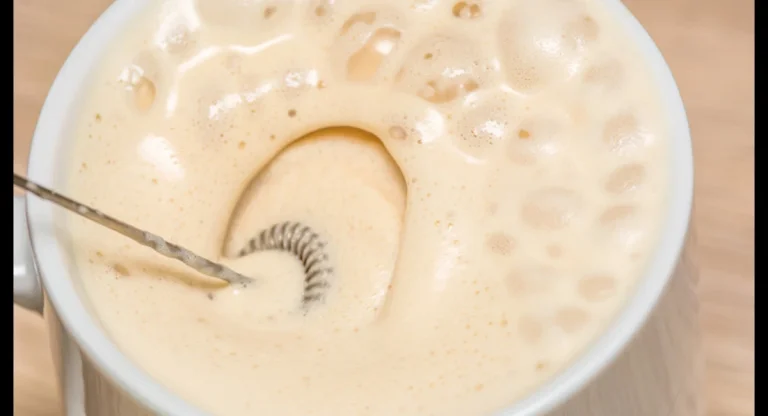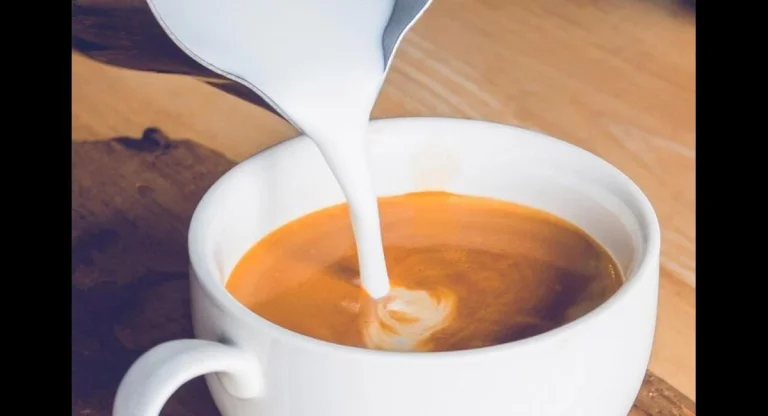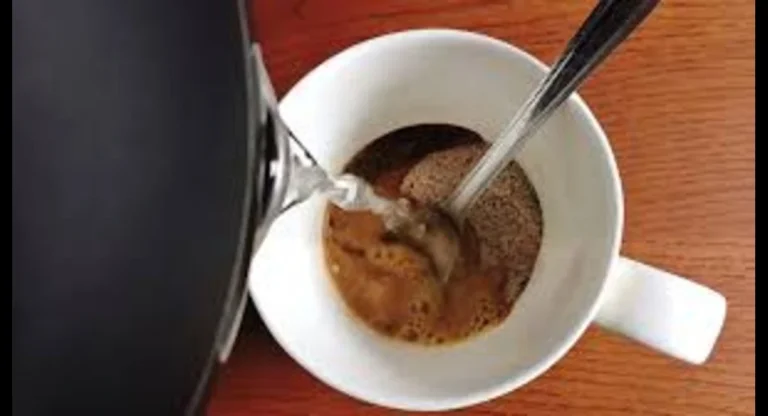What Are The Differences Between Cappuccino and Mocha?
Coffee culture has become an integral part of daily life, with cappuccino and mocha standing out as two of the most popular choices among coffee lovers. Whether you’re sipping on a cappuccino during your morning commute or indulging in a mocha as a mid-afternoon treat, these drinks offer distinct experiences. Both beverages stem from the same coffee-making process, but they diverge in several critical aspects, from ingredients to taste.
Below, we dive deep into the differences between cappuccino and mocha to help you make an informed decision next time you’re at a café.
Cappuccino Overview
Cappuccino is a classic Italian coffee beverage that has become a staple in cafes worldwide. Made with equal parts espresso, steamed milk, and milk foam, cappuccino offers a balanced and rich coffee experience. Its smooth texture and slightly sweet flavor (without chocolate) are complemented by the light creaminess of the foam on top.
Mocha Overview
Mocha, on the other hand, adds a twist to the traditional coffee experience by incorporating chocolate. Originating from the Yemeni city of Mocha, this drink pairs espresso with steamed milk and chocolate syrup. The result is a sweet, indulgent beverage that blends the bitterness of coffee with the richness of chocolate, creating a more dessert-like flavor profile.
Key Differences Between Cappuccino and Mocha
Before we dive into detailed comparisons, here’s a quick table overview of the main differences between cappuccino and mocha:
| Factors | Cappuccino | Mocha |
|---|---|---|
| Taste | Less sweet; focuses on espresso and milk | Sweeter due to added chocolate syrup |
| Calories | Around 60 calories | Approximately 180 calories |
| Caffeine | 173 mg per 16 oz | 292 mg per 16 oz |
| Color | Lighter brown, depends on milk ratio | Darker due to chocolate |
| Chocolate | No chocolate | Contains chocolate syrup |
| Toppings | Usually no toppings, sometimes cocoa powder | Often served with whipped cream or cocoa |
| Milk | Regular steamed milk | Steamed milk combined with chocolate syrup |
In-depth Analysis of Cappuccino vs Mocha
Taste
The most noticeable difference between cappuccino and mocha is the taste. While cappuccino features a more subtle, espresso-forward flavor with a light sweetness from steamed milk, mocha delivers a sweeter, dessert-like experience. This is because mocha includes chocolate syrup, which adds a rich and creamy sweetness that cappuccino lacks.
Calories
For those conscious of calorie intake, cappuccino is the lighter option. A standard 16-ounce cappuccino contains around 60 calories, primarily from the milk. In contrast, mocha contains around 180 calories, with the chocolate syrup contributing to its higher calorie count.
Caffeine Content
Both drinks offer a solid caffeine boost, but mocha generally has more. Cappuccino contains around 173 mg of caffeine per 16-ounce serving, while mocha provides about 292 mg. This is due to the fact that both coffee and chocolate contain caffeine.
Comparison of Ingredients
The composition of both beverages is quite similar in that they both use espresso and steamed milk. However, the added chocolate in mocha alters the recipe and the taste. Here’s a table summarizing the key ingredients:
| Ingredient | Cappuccino | Mocha |
|---|---|---|
| Espresso | Single or double shot | Single shot |
| Milk | Steamed milk and milk foam | Steamed milk with added chocolate syrup |
| Chocolate | None | Chocolate syrup or cocoa powder |
| Foam | Micro-foam layer on top | Optional whipped cream |
Preparation Method
The preparation methods of cappuccino and mocha differ mainly due to the presence of chocolate in mocha. Here’s a breakdown of the steps:
Cappuccino Preparation
- Pull a single or double shot of espresso.
- Steam and foam milk.
- Pour the steamed milk over the espresso, creating a layered effect with foam on top.
- Optional: Add a sprinkle of cocoa powder for decoration.
Mocha Preparation
- Pull a shot of espresso.
- Add chocolate syrup or powder to the cup.
- Steam milk and mix with the chocolate-infused espresso.
- Optional: Top with whipped cream and a drizzle of chocolate syrup.
Coffee culture has become an integral part of daily life, with cappuccino and mocha standing out as two of the most popular choices among coffee lovers. Whether you’re sipping on a cappuccino during your morning commute or indulging in a mocha as a mid-afternoon treat, these drinks offer distinct experiences. Both beverages stem from the same coffee-making process, but they diverge in several critical aspects, from ingredients to taste.
Below, we dive deep into the differences between cappuccino and mocha to help you make an informed decision next time you’re at a café.
Cappuccino Overview
Cappuccino is a classic Italian coffee beverage that has become a staple in cafes worldwide. Made with equal parts espresso, steamed milk, and milk foam, cappuccino offers a balanced and rich coffee experience. Its smooth texture and slightly sweet flavor (without chocolate) are complemented by the light creaminess of the foam on top.
Mocha Overview
Mocha, on the other hand, adds a twist to the traditional coffee experience by incorporating chocolate. Originating from the Yemeni city of Mocha, this drink pairs espresso with steamed milk and chocolate syrup. The result is a sweet, indulgent beverage that blends the bitterness of coffee with the richness of chocolate, creating a more dessert-like flavor profile.
Key Differences Between Cappuccino and Mocha
Before we dive into detailed comparisons, here’s a quick table overview of the main differences between cappuccino and mocha:
| Factors | Cappuccino | Mocha |
|---|---|---|
| Taste | Less sweet; focuses on espresso and milk | Sweeter due to added chocolate syrup |
| Calories | Around 60 calories | Approximately 180 calories |
| Caffeine | 173 mg per 16 oz | 292 mg per 16 oz |
| Color | Lighter brown, depends on milk ratio | Darker due to chocolate |
| Chocolate | No chocolate | Contains chocolate syrup |
| Toppings | Usually no toppings, sometimes cocoa powder | Often served with whipped cream or cocoa |
| Milk | Regular steamed milk | Steamed milk combined with chocolate syrup |
In-depth Analysis of Cappuccino vs Mocha
Taste
The most noticeable difference between cappuccino and mocha is the taste. While cappuccino features a more subtle, espresso-forward flavor with a light sweetness from steamed milk, mocha delivers a sweeter, dessert-like experience. This is because mocha includes chocolate syrup, which adds a rich and creamy sweetness that cappuccino lacks.
Calories
For those conscious of calorie intake, cappuccino is the lighter option. A standard 16-ounce cappuccino contains around 60 calories, primarily from the milk. In contrast, mocha contains around 180 calories, with the chocolate syrup contributing to its higher calorie count.
Caffeine Content
Both drinks offer a solid caffeine boost, but mocha generally has more. Cappuccino contains around 173 mg of caffeine per 16-ounce serving, while mocha provides about 292 mg. This is due to the fact that both coffee and chocolate contain caffeine.
Comparison of Ingredients
The composition of both beverages is quite similar in that they both use espresso and steamed milk. However, the added chocolate in mocha alters the recipe and the taste. Here’s a table summarizing the key ingredients:
| Ingredient | Cappuccino | Mocha |
|---|---|---|
| Espresso | Single or double shot | Single shot |
| Milk | Steamed milk and milk foam | Steamed milk with added chocolate syrup |
| Chocolate | None | Chocolate syrup or cocoa powder |
| Foam | Micro-foam layer on top | Optional whipped cream |
Preparation Method
The preparation methods of cappuccino and mocha differ mainly due to the presence of chocolate in mocha. Here’s a breakdown of the steps:
Cappuccino Preparation
- Pull a single or double shot of espresso.
- Steam and foam milk.
- Pour the steamed milk over the espresso, creating a layered effect with foam on top.
- Optional: Add a sprinkle of cocoa powder for decoration.
Mocha Preparation
- Pull a shot of espresso.
- Add chocolate syrup or powder to the cup.
- Steam milk and mix with the chocolate-infused espresso.
- Optional: Top with whipped cream and a drizzle of chocolate syrup.
Popularity and Regional Differences
Cappuccino enjoys widespread popularity in Europe, particularly in Italy, where it originated. It is traditionally consumed in the morning. In contrast, mocha is more popular in North America due to its sweeter, more indulgent nature, making it a favorite choice for an afternoon treat.
FAQs
1. Which is healthier: cappuccino or mocha?
Cappuccino is the healthier choice for those monitoring calorie intake. With only 60 calories per serving compared to mocha’s 180 calories, cappuccino is a lighter option.
2. Does mocha have more caffeine than cappuccino?
Yes, mocha generally has more caffeine due to the combination of coffee and chocolate, which both contain caffeine. A 16-ounce mocha contains about 292 mg of caffeine, compared to cappuccino’s 173 mg.
3. Can I add chocolate to cappuccino?
While traditional cappuccino does not include chocolate, you can add a dusting of cocoa powder or a small amount of chocolate syrup for a mocha-like twist.
4. Is cappuccino stronger than mocha?
In terms of caffeine content, mocha is stronger due to the additional caffeine from the chocolate. However, cappuccino can be made stronger by using a double shot of espresso.
Final Thoughts
Choosing between cappuccino and mocha ultimately comes down to your personal preference. Cappuccino offers a more balanced and classic coffee experience with its equal parts espresso and milk, while mocha provides a sweeter, richer alternative with the addition of chocolate. Whether you’re in the mood for a light and frothy cappuccino or a decadent mocha, both drinks have something unique to offer.
To help make your choice easier, here’s one last table to summarize key distinctions:
| Attribute | Cappuccino | Mocha |
|---|---|---|
| Texture | Smooth, frothy | Creamy, richer due to chocolate |
| Sweetness | Mild | Sweet, chocolate-flavored |
| Best Time to Drink | Morning | Afternoon or as a dessert |
Enjoy your coffee journey, whether you’re a cappuccino connoisseur or a mocha enthusiast!
Popularity and Regional Differences
Cappuccino enjoys widespread popularity in Europe, particularly in Italy, where it originated. It is traditionally consumed in the morning. In contrast, mocha is more popular in North America due to its sweeter, more indulgent nature, making it a favorite choice for an afternoon treat.
FAQs
1. Which is healthier: cappuccino or mocha?
Cappuccino is the healthier choice for those monitoring calorie intake. With only 60 calories per serving compared to mocha’s 180 calories, cappuccino is a lighter option.
2. Does mocha have more caffeine than cappuccino?
Yes, mocha generally has more caffeine due to the combination of coffee and chocolate, which both contain caffeine. A 16-ounce mocha contains about 292 mg of caffeine, compared to cappuccino’s 173 mg.
3. Can I add chocolate to cappuccino?
While traditional cappuccino does not include chocolate, you can add a dusting of cocoa powder or a small amount of chocolate syrup for a mocha-like twist.
4. Is cappuccino stronger than mocha?
In terms of caffeine content, mocha is stronger due to the additional caffeine from the chocolate. However, cappuccino can be made stronger by using a double shot of espresso.
Final Thoughts
Choosing between cappuccino and mocha ultimately comes down to your personal preference. Cappuccino offers a more balanced and classic coffee experience with its equal parts espresso and milk, while mocha provides a sweeter, richer alternative with the addition of chocolate. Whether you’re in the mood for a light and frothy cappuccino or a decadent mocha, both drinks have something unique to offer.
To help make your choice easier, here’s one last table to summarize key distinctions:
| Attribute | Cappuccino | Mocha |
|---|---|---|
| Texture | Smooth, frothy | Creamy, richer due to chocolate |
| Sweetness | Mild | Sweet, chocolate-flavored |
| Best Time to Drink | Morning | Afternoon or as a dessert |
Enjoy your coffee journey, whether you’re a cappuccino connoisseur or a mocha enthusiast!







